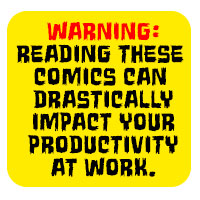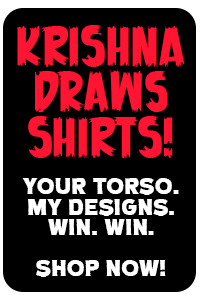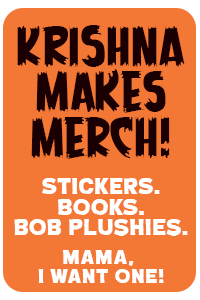My Coloring Process: Step by Step
Ask one hundred digital artists how they color their comics and you’re likely to get one hundred different approaches. Based on a Twitter conversation I had with Tom Brazelton earlier this week, I decided to document my coloring workflow using Photoshop CS5.5.
First I make sure to keep my inks on a separate layer. I always color on a new layer underneath the “inks” layer to preserve the line quality of my inks. I also have the Anti-alias, Contiguous, and Sample All Layers options checked.
Next I use the Magic Wand tool in Photoshop to select areas of my drawing that I would like to color. For the Magic Wand tool, I use a tolerance value of 95. The number isn’t important as much as the reasoning behind the number. Simply put: the higher value of the tolerance, the more coarse the selection, meaning that the more pixels you’ll be able to select within a defined Magic Wand selection.
I first start in by coloring using a darker shade of the actual colors I plan on using.
Once all the dark shade colors have been applied, I duplicate the layer (Command-J) and use the Hue / Saturation Tool (Command-U) to adjust the lightness and saturation values.
This new color layer (light_colors) is a lighter shade of the base (darker) colors I started off with. (See below.)
Now I have two layers of colors. To make the shading appear, I use the Eraser tool to remove areas of the light_colors layer to reveal the darker colors that reside in the dark_colors layer.
Lastly, I select the inks layer and apply a Color Overlay effect, making the ink color slightly reddish (off black), warming up the overall ink color. Below is the final image.
Questions? Comments? Want to share your own digital coloring technique? Add your input in the comments below!
-Krishna








Andrei Esca
April 14, 2012 at 11:03 pmPretty cool tutorial. I always wondered if there’s a quicker way to do shading. Also, your style of making the ink off black is interesting. I might give that a try.
Krishna
April 14, 2012 at 11:08 pmThanks, Andrei. If you or anyone else have any questions on coloring or other parts of my workflow, please feel free to ask and I’ll do my best to answer.
Gordon
April 14, 2012 at 11:07 pmThis is an interesting way to do that. (I don’t mean “interesting” bad, just interesting different than any way I’ve seen it.)
There are two issues with it, though, that are less a matter of opinion, both relatively minor —
1) Doing it this way, by magic-wanding directly from your line art, you have no trap. If you’re planning on using offset printing for anything, you might run into some trouble there. The Flatten plug-in from B-Pelt might be the easiest way to do that. Or, you could create an action to expand your magic wand shapes by 3px before creating your flat art. There are other ways that would require bigger changes to your workflow.
2) You shouldn’t use the Eraser tool on your light layers. It’s destructive, and if you fuck up, you have to redraw where it is, and if you’ve got the wrong color selected now, you have to reselect that… It’s just not the best way to do it.
A simpler way might be to just use a Layer Mask and then “erase” the parts of the mask you want to reveal it. If you see a colored a spot you need to erase on the light layer, you have to erase it on both the light and dark layers. You double your work there. Yet another drawback with this method is, you can’t adjust the saturation and lightness of your lighter layer easily.
Instead, you can achieve the exact same results — but with complete reeditablity — with only the “darker” layer and an Hue/Sat adjustment layer, made into a clipping mask. And then add your light areas on the layer mask to the Hue/Sat layer. I’ll tweet you an image.
Krishna
April 14, 2012 at 11:12 pmVery helpful, Gordon – thanks! What I omitted from the work flow is the process by which I duplicate the inks layer and duplicate the (now flattened) colored layers – place those two duplicates under both the originals – then apply a gaussian blur to “fill” in any gaps that might exist.
But I’m no expert on coloring. I’ll definitely try your approach with the clipping mask.
Gordon
April 14, 2012 at 11:20 pmI’m not exactly an expert at coloring, either, but I have worked as a professional retoucher, so I know Photoshop very well. The clipping mask/adjustment layer thing is really the exact same way you’re doing it, just simplified a tiny bit.
Karl
April 14, 2012 at 11:14 pmYou are so right about the 100 artists/100 different ways of coloring. The method you use for shading is a new one to me. I always use a new layer on top of the flats set to multiply 48% with a medium gray color for shading, if I use shading at all.
The one thing I think most of us have in common is using layers to get the flats done quick and dirty. I have seen a few books and tutorials that tell us to do the colors with channels instead, but I find that adds a few extra steps to the process where all I want to do is get the flats laid in as fast as I can. Effects are another story…lol
Krishna
April 14, 2012 at 11:18 pmAgreed, Karl. To clarify – my approach to coloring is definitely related to “doing it fast”. I’m going to give Gordon’s approach a try because I like his idea of keeping the edits via a non-destructive approach.
hari
April 20, 2012 at 12:27 pmHi Krishna, I always use Inkscape these days for inks and colouring in preference to bitmap image editors. Inkscape is a free, open-source alternative to Adobe Illustrator-like tools and it does a pretty good job too.
Again, I like the fact that you can make any DPI resolution with a vector graphics tool – so easy to make a printable edition and a web edition with just one back end SVG file.
Not that your technique is bad or anything – I just wanted to give you my own method of doing it.
hari
April 20, 2012 at 12:30 pmI must add that I use a transparency mask for shadow effects by adding a new layer and then using a darker version of the same colour with transparency set to around 40% over the flat colour.
Mke
June 11, 2014 at 3:04 pmI was wondering how you create those textured backgrounds that I see in a lot of your comics. I was hoping that this would be covered in your coloring process, but this seems to be specific to characters. I see this “texture” effect a lot in Penny Arcade as well. It kind of looks like a watercolor type effect. Are you able to explain how this is created? I see it in most of the work in your portfolio. I may not be describing it correctly, but perhaps if you could go through the process of creating your backgrounds, that would help?
Krishna M. Sadasivam
June 11, 2014 at 3:13 pmSure thing, Mke. Expect a tutorial on the subject soon. Thanks!